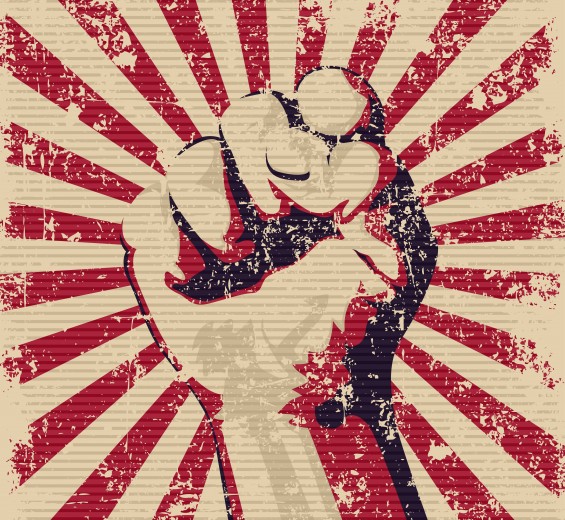Consider yourself lucky: As a Latino-American you’re entitled to July 4th’s rowdy BBQ’s and beach side chilling in the name of America’s freedom and Hispanic Heritage Month to commemorate the awesomeness of your Latinidad. Not sure why or what you’re supposed celebrate? Here’s a crash course.
Hispanic Heritage Month began in the U.S. in the late 60’s, first as a commemorative week and was later expanded to 30 days from September 15th to October 15th and in 1988 by President Reagan to big up the contributions of Americans who descended from Spain, Mexico, the Caribbean, Central and South America. This time period was picked to coincide with the independence days of Costa Rica, El Salvador, Guatemala, Honduras and Nicaragua (September 15) Mexico (September 16) and Chile (September 18). The road to independence for these countries is like a really awesome action film: lots of blood, guts and badassery.
It Started With Mexico
On the morning of September 16, 1810, Father Miguel Hidalgo, a priest in Dolores, Mexico called for revolution with “El Grito de Dolores” as he rang the church bells. Sure, the rebellion was thwarted half way to the capital and el padre was captured by Spaniards and killed about a year later, but the freedom fighting continued. Guys like José María Morelos, Vicente Guerrero, Guadalupe Victoria and discontented Spanish officer Agustín de Iturbide whose rebel army triumphed in 1820, were responsible for creating a sovereign Mexico. La madre patria, Spain, recognized Mexico’s independence formally in August of 1821.
Then Chile Caught the Bug
With Spain busy trying to save their king from the French and the country’s corrupt Governor García Carrasco hiding out after a deal with the Brits went horribly wrong, Chilenos were free to discuss their future out of the Spanish empire. On September 18, 1810, patriots Bernardo de Vera Pintado, Count Mateo de Toro y Zambrano and rich boy-turned-revolutionary hero Bernardo O-Higgins—met in Santiago and decided that they would declare independence while still maintaining a close and loyal relationship with the Spanish throne. In 1826 after almost a decade of war Chile was free. But the all important September 18th meeting is recognized as the country’s first real steps away from the Spanish crown.
And Central America Joined the Party
In September of 1821, Costa Rica, El Salvador, Guatemala, Honduras, and Nicaragua–then known collectively as the Captaincy of Guatemala–caught fuego for freedom and forged ahead towards being their own united nations. Regional leaders like Nicaraguan Miguel Larreynaga and Guatemala’s Brigadier Gainza drafted an Act of Independence that was approved by Spain. In 1822, the men voted to join de Iturbide’s First Mexican Empire as the United Provinces of Central America.
Not everyone was pumped about moving to another empire though.
El Salvador favored total autonomy and resisted, but the collective fell before a single bullet was fired. In March of 1823, Iturbide was out. A few months and another Declaration of Independence later, the Federal Republic of Central America was born. Once again, conflicts among leaders led to revolt. Dudes like Honduran Francisco Morazan fought to keep the regions united, but Guatemalan Rafael Carrera and the rest of the opposition fought harder. The Federation collapsed in 1838.
Declaration of Celebration
Naturally, indebted to their heroes, each country parties in gratitude. Some celebrations last three days while others an entire month. Communities from Mexico to Chile decorate their towns in flags, flowers and fireworks in their respective country’s colors, children of all ages sing their national anthems, play traditional music, dance in day-long parades and hear the legends of their forefathers.
At the tail end of the month is the all-inclusive “El Día de la Raza,” better known stateside as Columbus Day. On this day, all the ethnic and cultural influences that make Latinos so unique are celebrated. Some folks don’t acknowledge the day believing that it commemorates Christopher Columbus the man who sailed the ocean blue in 1492. Except that Dia de la Raza, like the rest of Hispanic Heritage Month, is a celebration of a multi-cultural, multi-ethnic society rich in pride and passion.

